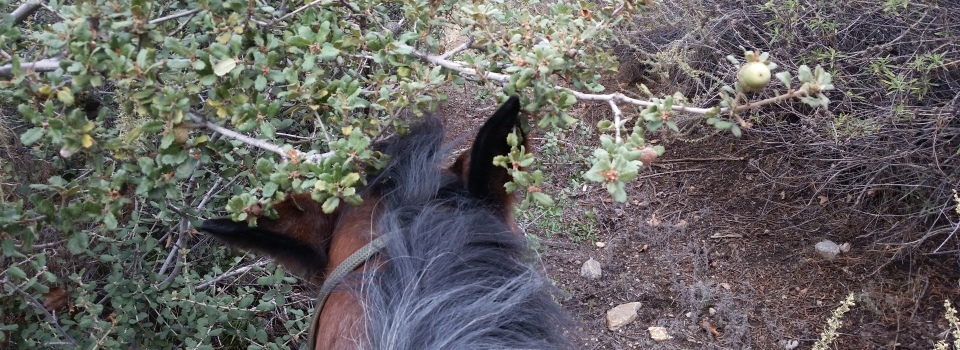No, not for shaving whiskers.
In philosophy, a razor is a principle or rule of thumb that allows you to eliminate (“shave off”) unlikely explanations for a phenomenon. Perhaps the most famous is Occam’s Razor: “Among competing hypotheses, the one with the fewest assumptions should be selected.” But one of my favorites is Hanlon’s razor: “Never attribute to malice that which can be adequately explained by stupidity.”
Buddy taught me Buddy’s Razor the hard way, for both of us. I regret a lot of the mistakes I made along the way, but he says he’s just glad that I finally figured it out.
Never attribute to defiance anything that can be adequately explained by pain, fear, or miscommunication.
—Buddy’s Razor
If I had a dollar for every time someone told me “He’s not respecting you! Don’t let him get away with that!”, I still wouldn’t have quite enough for all the vet bills, but it sure would make a dent. There are two big things wrong with that attitude. First, horses are incapable of respect—it requires a level of abstract thought that they don’t have. People load a lot onto the term “disrespect” when they apply it to horses, but the part I’m referring to here is better called “defiance”. The second problem with the statement is that correcting a horse for “defiance” is only useful it you have correctly identified it, and in most other cases is counterproductive.
It’s true that horses are sometimes truly defiant, most often for one very specific reason—a horse may judge your position in the overall social hierarchy of humans and horses to be lower than his (more about this in another post), and so feel no need to follow your direction. But more often, the appearance of defiance is a result of pain, fear, or miscommunication.
Pain
Most horses are better than most people at not showing pain. This is adaptive for a prey animal, since a predator is more likely to attack you if you appear incapacitated in any way. But it causes us to miss signs of pain, and in many cases we interpret as “defiance” the reaction to pain.
When I was learning the basics of equitation with Buddy, one of the exercises was the 20 m circle. He did well in a circle to the left, so it was puzzling that he would fall to the outside on the circle to the right. The instructor had me try the traditional corrections, but they didn’t have the “traditional effect”. It turned out that he had an arthritic right hock, so it caused pain for him to reach under his body with the right hind on the circle, and he responded by falling to the outside. When his arthritis was treated, the problem went away.
Fear
Horses survive by fear and flight. It’s a wonder that they work with humans at all. There are plenty of jokes about horses being “afraid of silly little things”, but when you ask a horse for something and he says “No way!”, it’s not so silly, and it’s not defiance. Forcing a horse against fear works often enough that people still do it, but it has long-term disadvantages.
You can never rely on a horse that is educated by fear. There will always be something that he fears more than you. But, when he trusts you, he will ask you what to do when he is afraid. —Antoine de Pluvinel
Miscommunication
As much trouble as people can have communicating with one another, you’d think that they’d expect even more miscommunication with a different species. But just as the stereotypic American tourist shouts English at people who don’t understand it, to make it more comprehensible, many riders respond to a horse not understanding by “shouting”—increasing the force of the aids, or moving on to punishment.
The order of Buddy’s Razor is important. First, rule out pain. If that’s not the problem, rule out fear (and pain can cause fear, since a painful horse cannot escape danger as easily). With both those ruled out, check to make sure you’re communicating. If the horse is not in pain, not afraid, and is being asked for something he has already shown he knows how to do, only then should you assume defiance.
